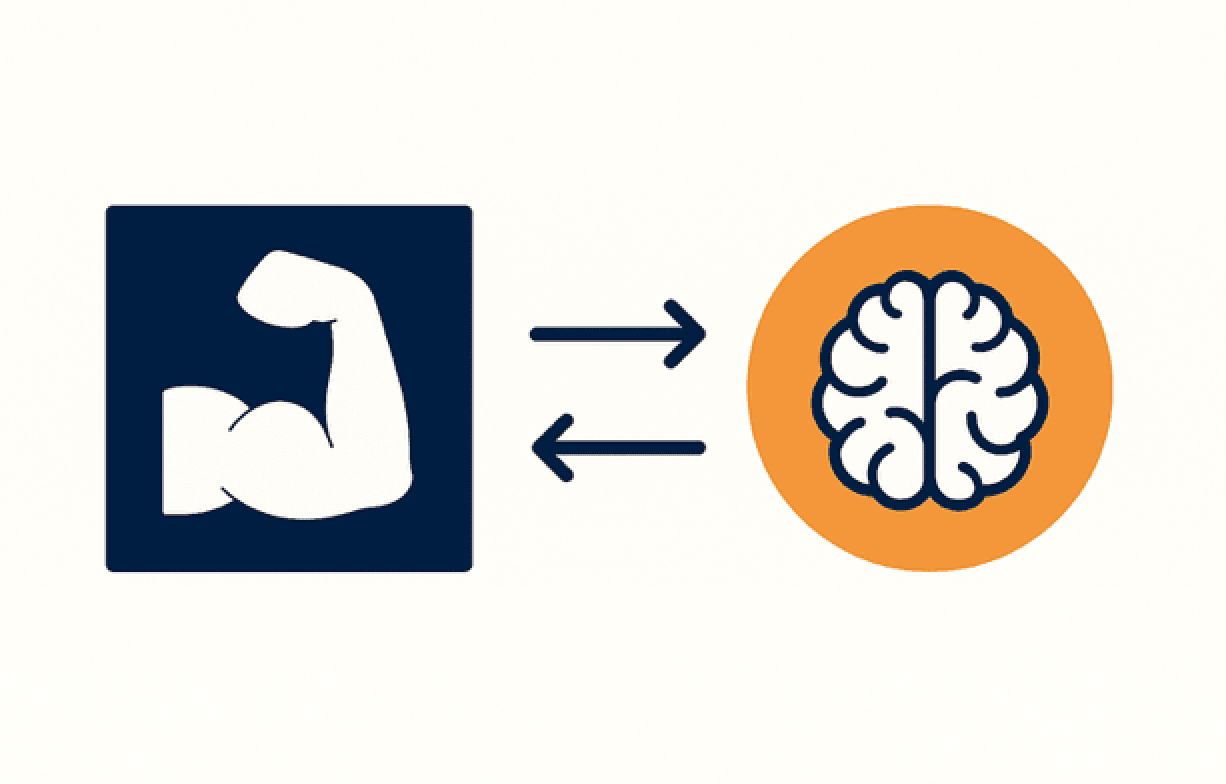The Switch Thinking System is built around the switch from Box Mode (i.e. structured) to Ball Mode (i.e. imaginative).
To help you make this switch I have developed 6 Switches.
One of which is Switch the Focus.
One of the best examples of this switch is from Physical Health to Mental Health.
It’s a story of how a simple shift in focus reshaped sport, business, and education — and why it matters now more than ever.
For decades, society has been obsessed with physical health.
We’ve tracked steps, heart rates, cholesterol levels.
We’ve built gyms, designed training programs, and measured VO2 max.
Whether in schools, sports clubs, or workplaces, the message was clear: take care of your body.
And while that focus brought incredible gains — in life expectancy, performance, and general wellbeing — something was missing.
What we couldn’t see, we often ignored.
That is, until a quiet but profound switch happened.
We began to shift our focus from physical health to mental health.
At its core, Switch Thinking is about making a conscious shift — in how we think, feel, or act.
And one of the most powerful switches of focus we’ve seen in recent years is this reorientation from what’s visible (the body) to what’s often hidden (the mind).
This shift didn’t happen overnight.
But once it started, it gathered extraordinary momentum.
Why the Switch Matters
1. It changed what we track, talk about, and take seriously
For a long time, health was defined by the physical:
We focused on heart rate, weight, strength, sleep, diet etc.
But the focus on mental health introduced new metrics such as stress levels, burnout risk, resilience, anxiety and depression and emotional energy.
We started asking new questions:
- “How are you really doing?”
- “Is this person thriving, or just surviving?”
- “How can we build psychological safety?”
And these weren’t just individual reflections. Organizations, schools, and sporting teams started building mental health into their systems.
2. It expanded who is responsible
Previously, health was viewed as an individual duty — your responsibility, your discipline, your self-care.
But switching focus to mental health distributed responsibility.
- Employers began offering mental health days, coaching, and employee assistance programs.
- Teachers started checking in on student wellbeing, not just academic performance.
- Coaches and sports clubs embedded mental skills training into regular routines.
Now, the system itself is expected to support mental health, not just the person.
3. It redefined what performance really means
In elite sport, the turning point came when coaches and athletes began saying aloud:
“It’s not just about how fast or strong you are. It’s how focused, calm, and mentally tough you are — under pressure.”
This shift gave rise to a new kind of preparation:
- Visualization techniques
- Breathing and focus drills
- Emotional regulation
- Mindset coaching
Athletes like Simone Biles, Naomi Osaka, Michael Phelps and cricketers Greg Chappell and Steve Smith helped normalize these conversations, breaking down stigma and redefining what “strength” looks like.
In schools and workplaces, the same shift occurred.
Productivity is no longer just about time management or hustle — it’s about energy management, clarity, and emotional health.
4. It opened up new forms of connection
Once we switched our focus to mental health, we discovered a new way to connect — with ourselves and others.
What began as awkward check-ins became real conversations.
What once was hidden became shared.
And what was taboo became teachable.
In teams, this creates empathy.
In families, it builds trust.
In classrooms, it fosters safety.
The Brain Science Behind the Switch
From a neuroscience perspective, this switch is deeply meaningful.
- Box Mode thinking favors external, measurable inputs — like heart rate, weight, and form.
- Ball Mode opens the door to internal, emotional, and imaginative realms — where mental health lives.
When we switch focus from the body to the mind, we activate the Default Mode Network (DMN) — the brain’s network for self-reflection, empathy, and insight.
And we often engage the Salience Network, which alerts us to important internal cues we might otherwise ignore.
This isn’t a rejection of physical health. It’s an expansion of focus — one that includes emotional, psychological, and social dimensions.
A Future Shaped by This Switch
This shift in focus is still unfolding.
But the impact is undeniable.
- More young people are seeking support earlier.
- More organizations are measuring mental fitness, not just KPIs.
- More leaders are being trained to lead with emotional intelligence.
And for all of us, the lesson is simple:
Sometimes, all it takes to unlock a breakthrough is to switch your focus.
Final Thought
If you’re feeling stuck, stuck in a loop, or stuck in stress — don’t try harder.
Try switching.
What are you focusing on?
What if you shifted from what’s not working to what is?
From the outside world to your inner world?
From solving to sensing?
It may sound small.
But it can be the beginning of your next Everyday Moment of Genius.

